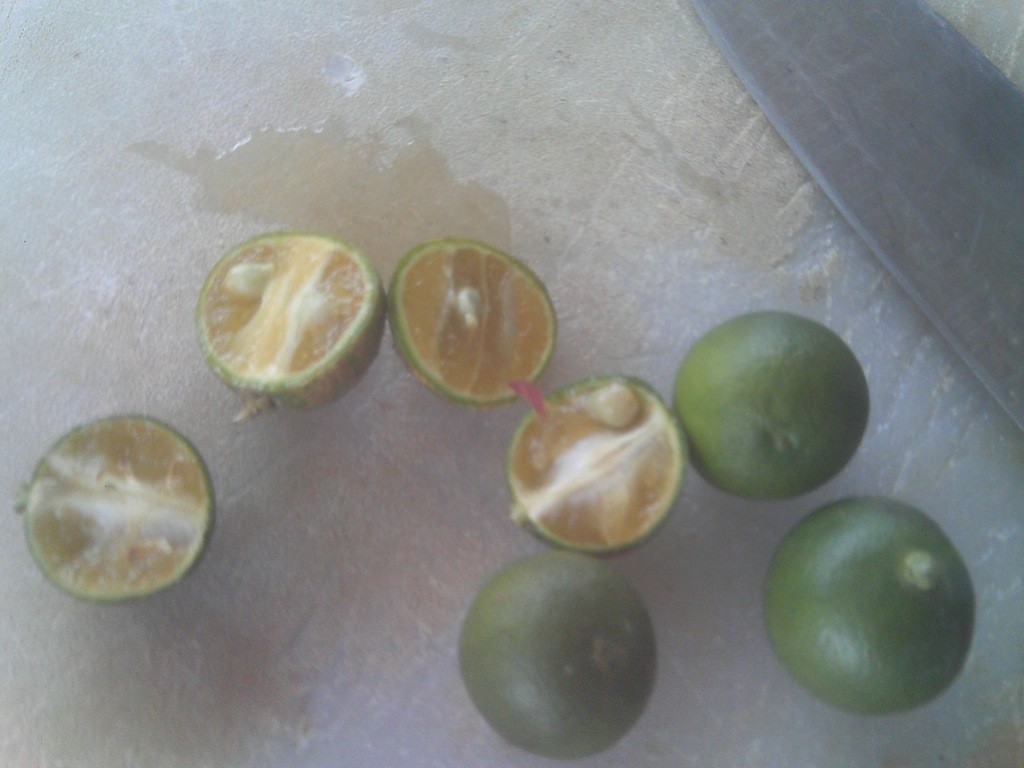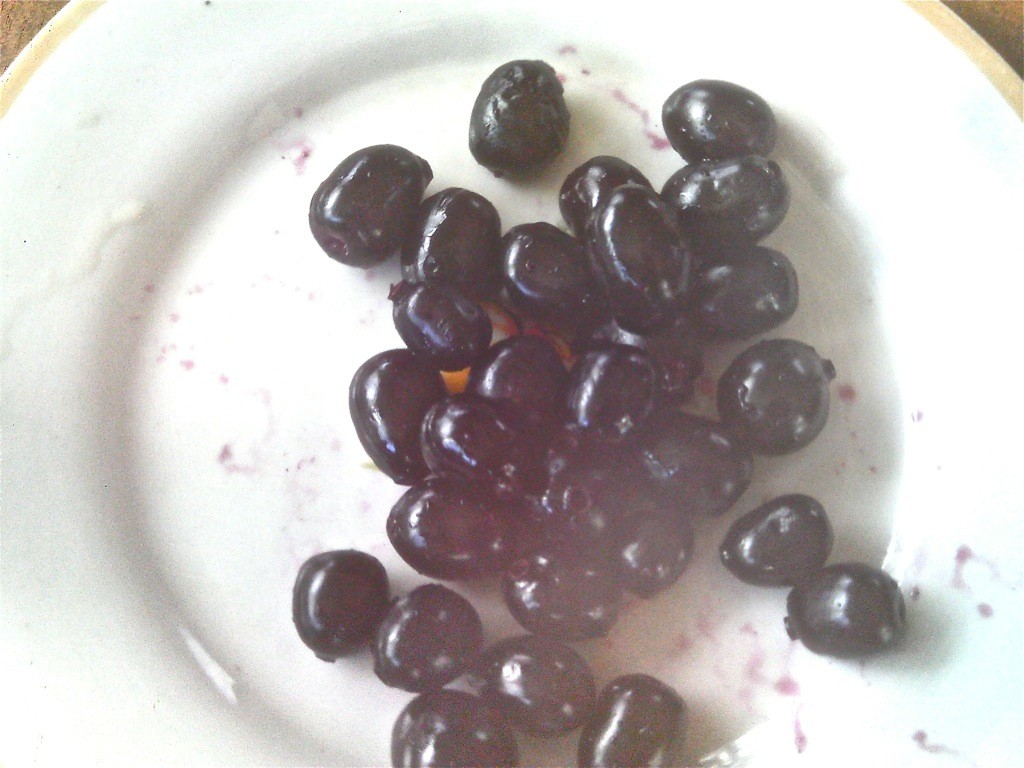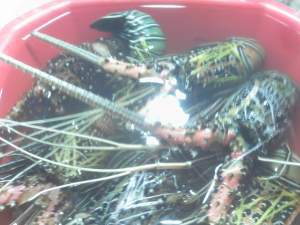Calamansi Butter
What makes the Filipino calamansi (or kalamansi) so fantastic is the absence of bitterness. They have a tang even more sour than a lime, but without the bitterness, so the hit is like essence of citrus. You can mix them with soy and chilli for a dipping sauce, or sprinkle them on just about anything to cut sweetness, salt or fat.
But today, after a trip to the market in Puerto Princesa, Palawan, we ripped off a recipe from Theo at the Tabon Village Resort down south, and used them for the ultimate “lemon”-butter sauce.
I went a little stir-crazy at the market, in fact.
My offspring is not, generally, the fondest of markets. The live fish in Cambodia freaked him out. And he’s not a fan of those pungent dried fish aromas you get in many Asian (and East London) markets.
So he requested tuna steaks in calamansi-butter sauce, with a tomato-cucumber salad, pleaded a sore leg (after a comical, yet painful, tumble down into an, ahem, “storm-drain” and associated iodine torture), and stayed back at the pension with the latest Artemis Fowl.
Besides the calamansi, I picked up longans, which are a revelation here, so different from the hard-shelled, slightly caramelised kind they sell in the UK as medlars. Muted gold fruits, about the size of apricots, you peel off the skin, like shelling a quail’s egg, to reveal gelatinous, translucent segments, with the occasional stone, which taste like a more acidic, yet also more delicate, lychee.
I also got some of these.
Known here as Filipino grapes, or duhat, and turned into a tooth-hurtingly sweet wine, these fruit are stunning: you might also know them as Java plums. The flesh is lychee-textured, and clings around a substantial stone, and the juice is deep enough to stain clothing. I guess the flavour sits somewhere between lychee, grape and blackcurrant: intense sweetness, with a vibrant acidity, and some subtle tannins from the skin to take the flavour away from crudity.
I also picked up some of the apricot-sized stoned fruits, with a tough, greenish skin that ripens to purple, known here as paho. The taste is very close to a sweet, yet more fibrous, green mango. Oh yes, and a few of the little, puckered, golden often blotchy mangos they sell here, with a juicy, aromatic sweetness that entirely belies their unappealing exterior.
Which is not bad, as shopping blind goes.
Anywise. Back to our lunch. The waters round here are stunningly rich, and catch comes in fresh to the market each day. I couldn’t resist these jewel-coloured spiny lobsters.
We’ll be turning these, some shrimps, some veggies and some tamarind into the classic sour soup, sinigang tomorrow.
Now, I know you shouldn’t eat bluefin tuna. But when there’s a side of a big one stuck in front of you and a nipper hollering for it, it’s hard to resist. I pointed feebly at the bleeding slab, indicated a slice with my finger, and brought back a slice of juicy, full-grown bluefin about 50cm in diameter.
So… In the rooftop kitchen here, with its gorgeous, unstyled garden (we’re at Pension Aniceto), we cooked for the first time since we left home in January. We made Joel Robuchon-esque mashed potatoes (pureed, fork, sieve, super-heavy on the butter, although without the temperature monitoring which brings them to full fruition).
We made a salad of flavour-packed yellow-orange plum tomatoes, and the slightly spongy but toothsome cucumbers they have here, which look more like a marrow to the western eye, with a dressing of garlic, delicately sweet cane vinegar, palm oil (which works well on veggies, though it would drown any leaves), salt and pepper.
Z transformed our tuna slab into four gargantuan steaks, with a little bit of help. I flash-fried them in the slightly sweet butter they like here, sprinkled with salt and pepper, chucked in the calamansi juice he had prepared, pulled them out, fine-tuned the balance of calamansi, butter and salt, and served.
He scoffed the lot. And has been reading through the Filipino cookbook our hosts left in the kitchen, and is already planning tomorrow’s meals…
This post is part of Wanderfood Wednesdays. Dig in!




Spectacular! The calamansi look just like limes but interesting that they are not bitter. Would love to try one!
Yum!